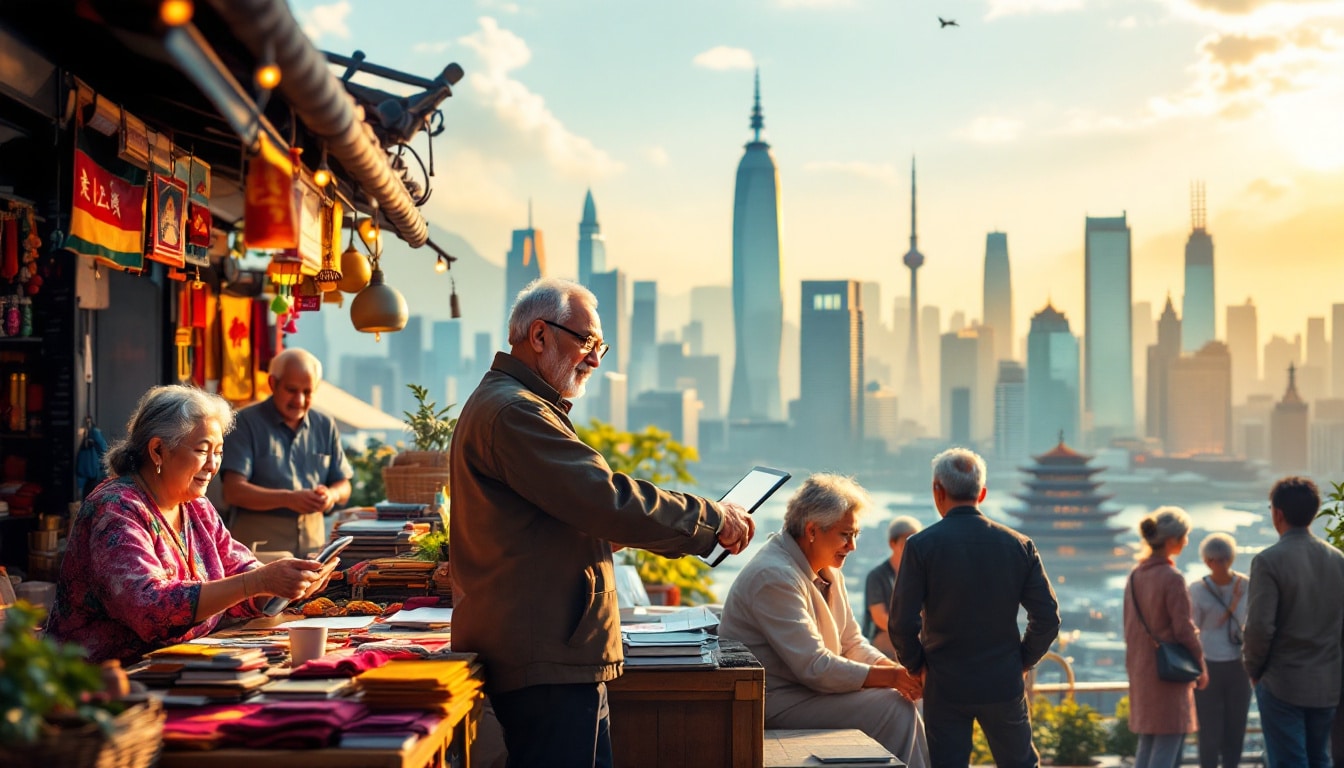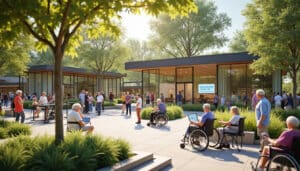Welcome to our site! Your online experience is at the heart of our concerns. We are committed to protecting your privacy.
We use cookies and data to provide and maintain our Google services. This helps us to detect failures and to guard against spam, fraud, and abuse. We also evaluate the engagement of our audience and site statistics to understand the usage of our services and improve their quality. By choosing “Accept all,” you also allow us to develop new services, measure the effectiveness of advertisements, and customize content and ads according to your preferences.

The silver economy, also known as the silver economy, represents a rapidly expanding sector driven by the aging global population. In Asia, this trend is taking on a particular scale, offering unprecedented opportunities for both businesses and governments. But what exactly is the silver economy and why is it so important in the Asian context?
What is the silver economy?
The silver economy encompasses all economic activities aimed at meeting the specific needs of the elderly population. This includes a variety of sectors such as health, housing, leisure, and technologies dedicated to seniors. With increasing life expectancy and decreasing birth rates, more and more countries, particularly in Asia, are witnessing the emergence of an aging population that requires tailored products and services.
In Asia, the aging population is accelerated by rapid economic growth and significant improvements in public health. This results in a growing demand for innovative solutions aimed at improving the quality of life for seniors. Moreover, Asian economies, such as Japan and South Korea, are already regarded as leaders in this field, serving as models for other nations in the region.
Why does Asia stand out in the silver economy?
Asia stands out on the global stage of the silver economy due to several key factors. First, the region is home to some of the oldest populations in the world, notably in China, Japan, and South Korea. This demographic creates sustained demand for products and services tailored to seniors.
Secondly, Asian governments recognize the importance of this market and implement favorable policies. For example, initiatives to encourage innovation in health and wellness technologies are frequently launched. These efforts are supported by significant investments in research and development, fostering the emergence of new companies specializing in the silver economy.
Finally, Asian culture, often focused on respecting elders, plays a crucial role in promoting the silver economy. This tradition encourages families to invest in the well-being of their older members, thereby reinforcing the demand for innovative and personalized solutions.
The benefits of the silver economy according to the IMF
According to the International Monetary Fund, the silver economy presents numerous economic advantages. It stimulates growth by creating new markets and encouraging innovation in various sectors. Additionally, it contributes to increasing employment rates among seniors, thereby reducing pressure on pension and public health systems.
The IMF also emphasizes that the silver economy can play a key role in the digital transformation of Asian societies. By addressing the specific needs of seniors, businesses are encouraged to develop more accessible and intuitive technologies, benefiting the entire population. This dynamic fosters a more inclusive and resilient economy, capable of adapting to demographic and societal challenges.
Finally, the silver economy promotes the creation of public-private partnerships, allowing for resource pooling and optimizing investments in long-term projects. These collaborations are essential to ensure sustainable and equitable development that meets the expectations of different stakeholders.
The significant growth of the silver economy in Asia
The silver economy in Asia is experiencing exponential growth, driven by increased demand for services and products tailored to seniors. Countries like Japan and China are heavily investing in the necessary infrastructure to support this expansion. The silver economy is taking off thanks to public and private initiatives aimed at creating a favorable ecosystem for innovation and growth.
Among the booming sectors, healthcare occupies a central role. Advanced medical technologies, such as telemedicine and remote monitoring devices, are increasingly being adopted to improve the quality of care for the elderly. Moreover, the housing sector continues to diversify, with the emergence of adapted residences and concierge services dedicated to seniors.
Leisure and wellness also constitute key areas of the silver economy. Specialized leisure centers, tailored fitness programs, and cultural activities are being developed to meet the expectations of an active and engaged population. This diversification of offerings helps create an inclusive and dynamic environment conducive to the well-being of seniors.
How to benefit from key sectors of the silver economy
To fully take advantage of the silver economy, it is essential to identify and invest in key sectors that meet the needs of seniors. Benefit from the rise of the silver economy by focusing on areas such as health, housing, information technology, and leisure services.
In the healthcare sector, technological innovations play a crucial role. Companies can invest in the development of smart medical devices, telemedicine platforms, and health data management solutions. These tools not only improve the quality of care but also reduce costs associated with taking care of seniors.
Housing represents another promising area. Adapted residences, equipped with technologies facilitating daily life, are increasingly in demand. By offering comfortable and secure living spaces, investors can meet a growing demand while contributing to the well-being of seniors.
Finally, information technologies offer unique opportunities to customize services aimed at seniors. Mobile applications, online platforms, and connected devices can create tailored user experiences, thus enhancing customer engagement and satisfaction.
The promising potential of the silver economy to explore
The silver economy holds immense potential that remains largely unexplored in Asia. The promising potential of this economy lies in its ability to stimulate innovation and create new economic opportunities. By investing in emerging sectors and developing innovative solutions, companies can not only meet the needs of seniors but also generate sustainable growth.
Among the high-growth areas, health and wellness technologies stand out. Advances in personalized medicine, gene therapies, and connected health devices offer unprecedented prospects for improving the quality of life for seniors. Furthermore, the development of intergenerational living communities can foster more balanced and harmonious living environments.
The leisure and education sector continues to diversify, offering programs tailored to the interests and abilities of older individuals. These initiatives not only encourage the maintenance of cognitive activity but also the creation of social bonds, essential for the emotional well-being of seniors.
Chinese innovation in the face of aging population challenges
China, as a leading nation in Asia, plays a crucial role in innovation related to the silver economy. In response to the challenges posed by its aging population, the country is investing in advanced technological solutions to meet the needs of seniors. How will China innovate? The answer lies in the integration of artificial intelligence, robotics, and the Internet of Things (IoT) to create smart and autonomous living environments.
Assistive robots, for example, are increasingly being used to provide daily assistance to seniors, whether for household tasks, medication management, or companionship. These technologies not only reduce the burden on family caregivers but also improve the independence and quality of life of seniors.
Moreover, telemedicine and online health platforms have become essential tools for managing home healthcare. These solutions enable continuous medical oversight without the need for frequent hospital visits, which is particularly beneficial for rural populations or those with mobility difficulties.
Finally, government initiatives promoting innovation in the silver economy encourage collaboration between the public and private sectors. These partnerships are essential for developing integrated and sustainable solutions, thereby ensuring an effective and tailored response to the challenges posed by an aging population.











